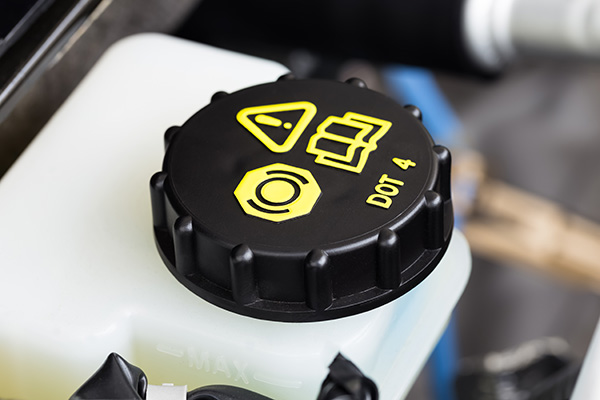
You might not think twice about your brake fluid—until something feels off when you press the pedal. Even if you haven’t touched your brakes or opened the reservoir, brake fluid can still go bad over time just by sitting there. That’s because it absorbs moisture from the air, and once it becomes contaminated, it stops doing its job as effectively.
Brake fluid may not wear out like oil or brake pads, but it does have a shelf life, even inside a sealed system. And when it goes bad, it can compromise your braking performance without warning.
Brake Fluid Has a Limited Life
Brake fluid is hygroscopic, meaning it naturally attracts and absorbs moisture—even in a closed system. Over time, water vapor seeps in through rubber brake hoses and seals. As more moisture builds up in the fluid, its boiling point drops.
Under hard braking, like during a sudden stop or mountain driving, your brake system heats up fast. If the fluid has absorbed too much moisture, it can boil under pressure, forming air bubbles that compress and reduce braking force. That leads to a soft or spongy pedal—and in extreme cases, brake failure.
Even if you’re not pushing your brakes hard, moisture and contaminants inside the fluid can corrode internal components like the master cylinder, ABS valves, and calipers. That’s how old fluid quietly causes expensive damage behind the scenes.
How Long Does Brake Fluid Last
Most manufacturers recommend replacing brake fluid every 2 to 3 years, regardless of mileage. The reason? It’s not about how often you drive but how much moisture the fluid has absorbed over time.
In a dry climate, fluid may last slightly longer. But in more humid regions—like San Luis Obispo, CA, where ocean air and seasonal moisture are common—brake fluid can degrade more quickly. If you haven’t had it tested or replaced in years, it’s probably overdue.
Signs Your Brake Fluid May Be Bad
Unlike oil, brake fluid doesn’t come with a change reminder. So, how do you know it’s gone bad? Some signs include:
- A spongy or soft brake pedal
- Increased stopping distance
- Brake warning lights (often triggered by ABS system issues)
- Dirty or dark-colored fluid in the reservoir
Fresh brake fluid is usually light yellow or clear. If yours looks dark brown or murky, it’s a sign of moisture, oxidation, or internal corrosion—and it needs to be flushed out.
Brake Fluid Flush
A brake fluid flush removes the old, contaminated fluid and replaces it with new, moisture-free fluid that restores proper system pressure and pedal feel.
Flushing isn’t just about topping off the reservoir—it involves pushing fresh fluid through the entire brake system to clear out the lines, calipers, and ABS components. It’s a maintenance service that protects both your stopping power and your wallet by avoiding long-term component damage.
Neglecting fluid changes might not cause problems immediately, but over time, it increases the risk of serious brake system failures—especially when you need your brakes most.
Is This Something You Can Check Yourself
You can visually inspect your brake fluid through the reservoir on top of the master cylinder. If the fluid is dark, murky, or below the minimum line, it’s time to have it checked.
However, determining fluid quality accurately requires a brake fluid tester, which checks the moisture content. Our professionals can quickly tell whether your fluid is still good or needs to be replaced.
And if you’ve recently replaced brake pads or rotors, it’s a good idea to check the fluid as well—fresh brakes won’t perform their best if they’re paired with old, water-saturated fluid.
If you’re not sure when your brake fluid was last replaced, bring your car to Morin Brothers Automotive in San Luis Obispo, CA. We’ll test the fluid, inspect your brake system, and perform a full flush if needed—so your brakes respond exactly when you need them to.